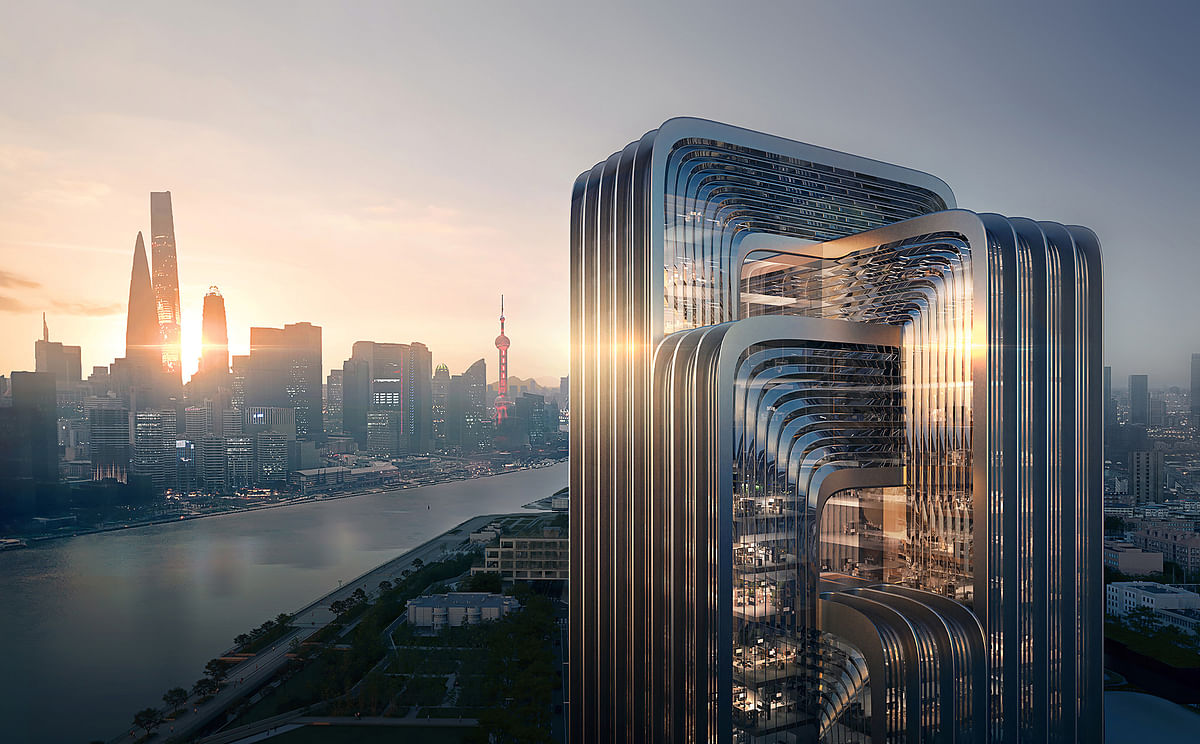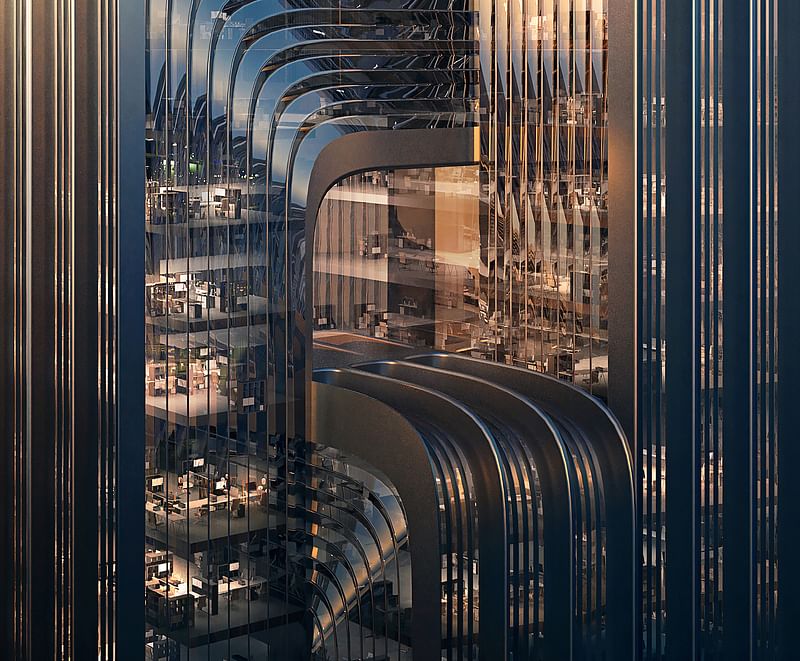Zaha Hadid Architects: new CECEP headquarters aims for Shanghai's highest green-building score
By Alexander Walter|
Thursday, Apr 30, 2020

Related
Zaha Hadid Architects has won the international design competition for the new Shanghai HQ of the China Energy Conservation and Environmental Protection Group (CECEP).
The victorious entry proposes a mixed-use ensemble of three office towers, retail and hospitality spaces, and an urban park. Given the client's mission, the complex boasts a variety of green-building features and aims for the highest sustainability score anywhere in Shanghai.
"Incorporating rainwater harvesting to irrigate expansive green spaces and landscaping in a biophilic design that enhances indoor-outdoor connectivity, the design also minimises cooling demand through optimised external shading," states ZHA's project description.

"With Shanghai’s significant temperature differences between day and night, each building's integrated thermal mass also provides reductions in both heating and cooling consumption. Extensive use of locally-produced, prefabricated components will reduce the project's embodied carbon and also support the local economy while procurement will prioritize the use of recycled materials.
"Photovoltaics located at roof level and within the façades are connected to battery storage and a micro-grid to provide on-site energy production that will reduce energy consumption by 25%.
"In addition to high-efficiency heating and ventilation with waste heat recovery, together with cooling systems using non-potable water, the new headquarters will also use thermal ice storage for cooling. Ice generated by chillers at night using off peak electricity is stored in thermal tanks then used for cooling during the day to significantly reduce peak daytime electrical consumption when the cooling load is highest.
"The building management system will continually monitor the interior environment and automatically react to changes in internal conditions such as variations in temperature, air quality, natural daylight, or number of occupants. To reduce energy consumption and prolong their lifespan, these intelligent systems will also collate data to predict and optimise energy usage.
"The new headquarters will use 5G network capability to operate intelligent management and biometric security systems that will eliminate contact with communal surfaces by staff and visitors."
The ZHA project team is led by Patrik Schumacher in charge of design; Project Directors Satoshi Ohashi and Michele Pasca di Magliano; Project Designer Maria Tsironi; Project Associate Yang Jingwen; and Project Architect Johannes Elias in collaboration with engineers Ramboll and China Academy of Building Research as local design institute.

RELATED NEWS Zaha Hadid Architects + Cox Architecture to design Western Sydney International Airport

RELATED NEWS Zaha Hadid-designed Danjiang Bridge in Taiwan scheduled for 2024 opening


Share
0 Comments
Comment as :